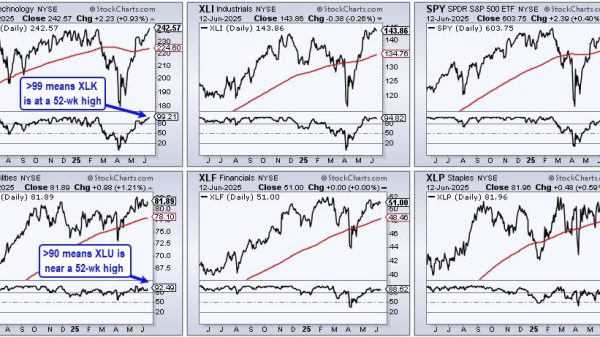What are collective investments – Get All The Information.
Have you wondered what collective investment is all about and what the collective investment fund represents exactly? Are you into new investment strategies that will enable you more profits in the near future? And, as a motivated investor in the dynamic and volatile industry, would you like to get all the crucial information regarding these popular investments?
If so, you should know that collective investments, such as funds, enable diverse investors worldwide to merge their money by purchasing either units or shares of that fund. In this way, investors can buy different types of available investments.
Usually, these investments include investment managers focused on one particular section, either tracking the index or market of their choice or focusing on an investment objective. But what does the collective investment fund refer to? Let’s dive deeper into this interesting fund, shall we?
What is the definition of a collective investment fund?
Also known by its acronym “CIF” and the famous investment trust, this fund refers to a category of merged accounts that either a trust company or a selected bank holds.
The institution consolidates assets from people and diverse companies to create a unified, diversified investment portfolio. In other words, it enables collective investing with numerous benefits that include the following:
Professional asset management for greater returns Risk management, cost-effective transactions through providences of scale Elevated asset diversification to reduce specific risks.What are the two categories of collective investments?
Regarding these investments, we have two different main categories:
A1 Funds
It refers to merged assets for investment or reinvestment, including pooling funds from diverse individuals or organizations. This makes a more diversified portfolio, allowing shared risk and access to wider investment opportunities.
A2: Funds
It means assembled assets granted for one of the following:
Retirement Profit sharing Stock bonus Other tax-exempt entities.These include pooling funds from various sources to create a larger investment portfolio, offering diversification and potential tax advantages.
What is the real-world example of CIFs like?
It is worth mentioning that CIFs are gaining traction in 401(k) plans, along with their share of assets increasing from 6% to 19% between 2000 and 2016.
The presence of CIFs in retirement plans has managed to rise from 43.8% to 65% between 2011 and 2017, as per Callan’s Defined Contribution Trends Survey. This highlights their fantastic value as a stable and diversified option for individuals seeking to achieve their financial goals.
How do these investment funds work exactly?
Collective Investment Funds (CIFs) usually operate under the famous parliamentary control of the OCC. They are very similar to mutual funds in pooled or pooled investments.
Nonetheless, unlike mutual funds, Collective investment refer to investment vehicles that aren’t regulated and fall more in line with hedge funds. CIF’s main goal is to decreased costs as much as possible via reductions in costs.
The objective is to merge co-sharing funds and retirement accounts within a unit investment account. It is important to be verseen by a financial institution or fiduciary company functioning as a depositary or custodian. Investment or collective investment scheme firms frequently serve as sub-advisers for the management of Collective Investment Fund (CIF) portfolios.
Who has the legal rights to the fund’s assets?
Regarding CIFs, the legal rights of the fund’s assets as a fiduciary has the bank exclusively. Collective investments are able to invest in numerous asset classes, such as the following ones:
Stocks Commodities Bonds Mutual funds Derivatives.It is crucial to note that banks worldwide utilize Collective Investment Funds (CIFs) to enhance investment management efficiency by consolidating possesions from different available accounts into a unified fund, implementing a specific strategy for investments and target, or intention.
This particular approach effectively reduces serviceable and administrative costs. From 2016, CIFs held around $2.8, 000,000,000,000 in investments, with anticipated growth to $3, 000,000,000,000 by the December of 2018, according to Cerulli Associates. CIFs are particularly beneficial for pension funds and investment pooling purposes.
A brief history of CIFs
CIFs have a rich history, originating in 1927. Nonetheless, their particular growth was curtailed by the stock exchange crash. These investments have managed to gain momentum through electronic platforms and become the preferred choice for specified contribution schemes.
In addition, these investments thrived alongside the increasing popularity of TDFs, offering diversification and streamlined investment transactions.
The main differences between CIFs and Mutual Funds
According to experts, Collective Investment Funds (CIFs) and mutual funds have some significant differences. For example, CIFs usually emphasize diversification and cost efficiency. On the other hand, mutual funds offer more investment options and facilitate dollar-cost averaging.
CIFs, known as collective investment schemes, will again prioritize long-term growth and may not suit short-term investment goals. In contrast, mutual funds encompass various investment vehicles, including ETFs, and cater to diverse objectives.
It is crucial to note that these two terms differ in the following areas:
Diversification focus Cost-efficiency Investment options Suitability for short-term goals.Collective investment funds represent collective investment schemes focused on long-term growth, while mutual funds provide a broader range of options, including ETFs.
Key Takeaways
– CIFs enable investors to pool money and buy units or shares for diversified investments.
– They are mostly held by banks or trust companies and create diverse portfolios with professional management and cost-effective transactions.
– CIFs offer legal rights to the bank as a fiduciary and invest in various asset classes.
– They include a rich history and gained momentum in the 21st century.
– CIFs differ from mutual funds in diversification, cost-efficiency, and long-term growth.
The post What are collective investments? appeared first on FinanceBrokerage.

























